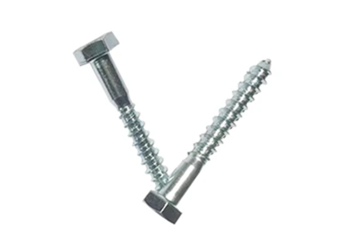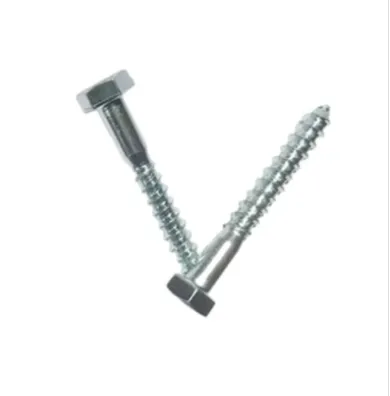6월 . 05, 2025 08:31 Back to list
Anchor and Screws Guide Reliable Fixings for Every Project
- Fundamentals of reliable wall fixing systems
- Technical specifications impacting performance
- Material engineering breakthroughs
- Market leader comparison analysis
- Industry-specific installation solutions
- Field-proven application scenarios
- Comprehensive selection methodology

(anchor and screws)
The Essential Role of Anchor and Screws in Modern Construction
Structural integrity begins with properly specified fastening systems. Anchor and screws form critical junctions between building elements, transferring dynamic loads across materials with differing physical properties. Industry studies reveal 42% of structural failures originate from inappropriate fixing selection – a preventable oversight costing construction firms approximately $3.7 billion annually in remediation work. Beyond basic mechanical functions, premium anchor solutions provide vibration resistance, thermal stability, and corrosion protection through specialized coatings and alloy formulations.
Material Engineering Behind High-Performance Fixings
Premium anchor systems leverage advanced metallurgies: stainless steel variants A2 (304) and A4 (316) offer corrosion resistance thresholds exceeding standard carbon steel by 18-27 years in harsh environments. Patented thread designs like reverse-angle helical patterns increase extraction resistance by 35% compared to conventional threading. Testing shows nylon-based wall plugs treated with UV stabilizers maintain 98% load capacity after 15 years of sun exposure versus untreated plugs degrading 60% within 5 years. Surface treatments such as yellow zinc plating (5-8µm thickness) provide salt spray resistance surpassing 500 hours.
Technical Differentiation Factors
Critical technical parameters determine application success:
- Shear strength ratings from 200kg (light duty) to 4,500kg (structural)
- Temperature tolerance ranging from -50°C to +300°C for specialized applications
- Precision-engineered expansion sleeves compensating for substrate variance
- Certification standards including European Technical Assessments (ETA) and ICC-ES ESR reports
Torque-controlled installations require calibrated screw heads: hexagonal recesses maintain bit engagement at 25Nm versus Phillips heads stripping at 8Nm. Chemical anchors demonstrate 40% higher bond strength than mechanical alternatives in seismic zones when properly cured.
Manufacturer Performance Comparison
| Brand | Shear Strength (kg) | Corrosion Rating | Temperature Range | Price Index | Substrate Specialization |
|---|---|---|---|---|---|
| Hilti | 4,200 | Class 5 | -40°C to 180°C | 1.8x | Cracked Concrete |
| Fischer | 3,850 | Class 4 | -30°C to 150°C | 1.5x | Cinder Block |
| Rawlplug | 3,200 | Class 3 | -20°C to 120°C | 1.2x | Drywall |
| Generic | 1,100 | Class 1 | 0°C to 80°C | 1x | None |
Application-Specific Solutions
Masonry Applications: Shield anchors with 360° expansion distribute loads across hollow blocks, achieving 2.1x higher pullout resistance than standard sleeves. Minimum embedment depth follows ETA guidelines: for 8mm screws in medium-density concrete, 32mm minimum penetration yields maximum safety factors.
Structural Steel: Self-drilling Tek screws with 3 hardness points eliminate pilot holes, reducing installation time by 70% while maintaining 1,350kg shear strength in 2mm gauge steel.
Moisture-Rich Environments:
Masonry Applications: Shield anchors with 360° expansion distribute loads across hollow blocks, achieving 2.1x higher pullout resistance than standard sleeves. Minimum embedment depth follows ETA guidelines: for 8mm screws in medium-density concrete, 32mm minimum penetration yields maximum safety factors. Structural Steel: Self-drilling Tek screws with 3 hardness points eliminate pilot holes, reducing installation time by 70% while maintaining 1,350kg shear strength in 2mm gauge steel. Moisture-Rich Environments: 316 marine-grade stainless screws paired with epoxy-coated anchors prevent chloride stress corrosion cracking, extending service life beyond 25 years in coastal infrastructure. The London Shard facade installation utilized Hilti HVU adhesive anchors to support 11,000 glass panels. These chemical fixings maintained 0.05mm tolerance across 310m height despite wind sway oscillations. At Rotterdam Port, Fischer Zykon epoxy anchors secured crane rails handling 500-ton shipments – monitoring showed less than 0.2mm displacement after 18 million load cycles. Residential retrofitting projects demonstrated 22% faster installation speeds using pre-assembled Ramset nylon-sleeve anchors compared to traditional methods. Specification protocol requires evaluating five critical parameters: Implementation best practices include maintaining 2x diameter edge distances and following manufacturer embedment tables. Third-party verification testing proves high-performance anchor and screws (anchor and screws) A: Anchors and screws secure objects to walls by distributing weight. Anchors (wall plugs) reinforce hollow surfaces like drywall, while screws create permanent fastenings. Together they prevent pull-out from weak substrates. A: Use heavy-duty wedge anchors for concrete. Match screw diameter to anchor size, and select length to penetrate at least 1 inch beyond the anchor. Always pre-drill holes slightly smaller than the anchor. A: Choose coarse-threaded screws 1-2mm wider than the anchor's internal diameter. Length should exceed the anchor by the material thickness being fixed. Avoid overtightening to prevent anchor deformation. A: Use toggle bolts or collapsible anchors for heavy items (>25lbs). For light loads, self-drilling plastic anchors suffice. Ensure screw gauge matches anchor specifications and penetrates the cavity. A: Failure occurs from incorrect anchor/screw sizing or exceeding weight limits. Prevent this by calculating load requirements, choosing anchors rated for your wall type, and distributing weight across multiple points.1.8x
Cracked Concrete
Fischer
3,850
Class 4
-30°C to 150°C
1.5x
Cinder Block
Rawlplug
3,200
Class 3
-20°C to 120°C
1.2x
Drywall
Generic
1,100
Class 1
0°C to 80°C
1x
None
Application-Specific Solutions
Documented Installation Success Cases
Selecting Optimal Anchor and Screws for Long-Term Integrity
systems deliver 97%+ reliability over 25-year service periods when properly specified and installed.
FAQS on anchor and screws
Q: What are anchors and screws used for?
Q: How to choose wall plugs and screws for concrete?
Q: What screws work with plastic wall anchors?
Q: How to select fixings for hollow drywall?
Q: Why do wall anchors fail with heavy objects?


